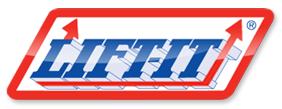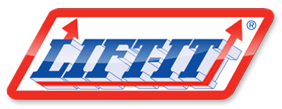Web Sling Inspection
A specific procedure for sling inspection is the best safeguard against injury, death and property damage. It is important that you employ a three stage, level of inspection to ensure that slings are inspected with the appropriate frequency. It is also important that all inspections must be done by trained and qualified personnel.
To detect possible damage, you should perform a visual inspection of the entire sling and also feel along its entire length, as some damage may be felt more than seen. You should look and feel for any of the types of conditions listed in the Removal from Service Criteria, see "Removal from Service". "Warning Info" depicts examples of some of the types of damage, but note that they are relatively extreme examples provided for illustration purposes only.
If you identify ANY of these types of damage in a sling, remove it from service immediately, even if the damage you see or feel is not as extensive as shown under "Warning Info". Slings that are removed from service must be destroyed and rendered completely unusable unless they can be repaired and proof tested by the manufacturer. Never ignore sling damage or attempt to perform temporary field repairs of damaged slings, (i.e., tie knots in the sling, etc.). It is very important that slings are regularly and properly inspected.
If you are not sure whether or not a sling is damaged, DO NOT USE IT.
SLING INSPECTION SYSTEMS
INITIAL INSPECTION
The Web Sling and Tie Down Association defines the initial level of inspection as, “Before any new or repaired sling is placed in service, it shall be inspected by a qualified person to ensure that the correct sling is being used, as well as to determine that the sling meets the applicable requirements”.
The American Society of Mechanical Engineers also states in the initial inspection that, “prior to use, all new, altered, modified or repaired slings shall be inspected by a designated person to verify compliance to all applicable standards”.
The initial level of inspection is done upon receipt to ensure that no damage has occurred during transit. The products must also be verified to be correct, as ordered and they comply with the manufacturer’s specifications. Without printed product specifications this comparison cannot be accomplished. If written records for individual slings are to be maintained, the documentation should be initiated at this level of inspection. Recordkeeping at the initial level of inspection is not required.
FREQUENT INSPECTION
The Web Sling and Tie Down Association defines the frequent level of inspection as one that is done by the user or other designated person daily or before each shift in NORMAL service conditions. When SEVERE service conditions exist, the sling must be inspected before each use. See page 476, Sling Service for definitions of Normal, Severe and Special Service. The entire sling shall be thoroughly examined and removed from service if damage is detected. OSHA and ASME stipulate that, “before each day or shift, the sling and all fastenings and attachments shall be inspected for damage and defects by a competent person designated by the employer”. If you are unsure if the daily or pre-shift inspection has been done, take the time to inspect the sling before you use it. WSTDA, OSHA and ASME provide minimum guidelines. Never assume that slings have been inspected by others.
A qualified person must also determine that the sling is proper for the intended use, hitch, load and environment. Any condition that may result in a hazard shall cause the sling to be removed from service. Written inspection records are not required for frequent inspections.
PERIODIC INSPECTION
All slings must be inspected “periodically” by designated personnel at regular intervals. In order to validate the Frequent Level of Inspection, the Periodic Inspection should be done by someone other than the individual(s) who performs the Frequent Inspection. The interval is based upon: the frequency of use, severity of the service conditions, the nature of the work being performed and experience gained during the inspection of slings used in similar circumstances. Recommendations to prevent damage must be evaluated to improve the service life of the replacement slings. Periodic Inspection intervals shall not exceed one year intervals.
ASME stipulates the following time interval guidelines for Periodic Inspections:
- Normal Service - Yearly
- Severe Service - Monthly to Quarterly
- Special Service - As recommended by a Qualified Person
Written records of the most recent periodic inspection shall be maintained. Reference to a unique, sling identification number is not required. If your employer or industry requires recording the condition of individual slings, continue the practice. The important point to realize is the ASME recordkeeping requirement mandates that the event be documented not the condition of individual slings.
Irrespective of the recordkeeping requirements that govern your actions, it is important that slings inspected “periodically” be identified or tracked to validate that the Periodic Inspection occurred. Lift-It® Slings can be equipped with an Inspection Loop™, Inspection Tag or RFID chipped for easy, visual verification of Periodic Inspections (See pages 54 and 55).
Designated Person: Selected or assigned by the employer or employer’s representative as being competent to perform specific duties.
Qualified Person: A person, who by possession of a recognized degree or certificate of professional standing in an applicable field, or who, by extensive knowledge, training and experience, has successfully demonstrated the ability to solve or resolve problems relating to the subject matter and work.
DOL-OSHA 29 CFR 1910.184 and GUIDANCE ON SAFE SLING USE
Make a thorough inspection of slings and attachments. Items to look for include:
- Missing or illegible sling identification.
- Acid or caustic burns.
- Melting or charring of any part of the sling.
- Holes, tears, cuts or snags.
- Broken or worn stitching in load bearing splices.
- Excessive abrasive wear.
- Knots in any part of the sling.
- Discoloration and brittle or stiff areas on any part of the sling.
- Pitted, corroded, cracked, bent, twisted, gouged or broken fittings.
- Other conditions that cause doubt as to continued use of a sling.
Where any such damage or deterioration is present, remove the sling or attachment from service immediately.
ASME B30.9 REMOVAL FROM SERVICE CRITERIA
-
Missing or illegible sling identification.
Section 9-5.7.1 requires that each sling be marked to show the following:- name or trademark of the manufacturer
- manufacturer’s code or stock number
- rated load for at least one hitch type and the angle upon which it is based
- type of synthetic material
- number of legs, if more than one
- Acid or caustic burns.
- Melting or charring of any part of the sling.
- Holes, tears, cuts or snags.
- Broken or worn stitching in the load bearing splices.
- Excessive abrasive wear.
- Knots in any part of the sling.
- Discoloration and brittle or stiff areas on any part of the sling, which may mean chemical or ultraviolet/ sunlight damage.
- Fittings that are pitted, corroded, cracked, bent, twisted, gouged or broken.
- For hooks, removal criteria as stated in ASME B30.10
- For other applicable hardware, removal criteria as stated in ASME B30.26
- Other conditions, including visible damage, that cause doubt as to the continued use of the sling.
WEB SLING AND TIE DOWN ASSOCIATION REMOVAL FROM SERVICE CRITERIA
SYNTHETIC WEB SLING SAFETY BULLETIN (WSSB-1) 2010
The entire web sling must be inspected regularly and it shall be removed from service if ANY of the following are detected:
- If sling identification tag is missing or not readable.
- Holes, tears, cuts, snags or embedded materials.
- Broken or worn stitches in the load bearing splices.
- Knots in any part of the sling webbing.
- Acid or alkali burns.
- Melting, charring or weld spatter on any part of the web sling.
- Excessive abrasive wear or crushed webbing.
- Signs of ultraviolet (UV) light degradation.
- Distortion, excessive pitting, corrosion or other damage to fitting(s).
- If provided, exposed red core yarn. However, if damage is present and red yarns are not exposed,
DO NOT USE the sling. - Any conditions that cause doubt as to the strength of the web sling.
![]() If any damage such as the following is visible, the sling shall be removed from service immediately. Photos depict examples of sling damage, but note they are extreme examples provided for illustration purposes only.
If any damage such as the following is visible, the sling shall be removed from service immediately. Photos depict examples of sling damage, but note they are extreme examples provided for illustration purposes only.
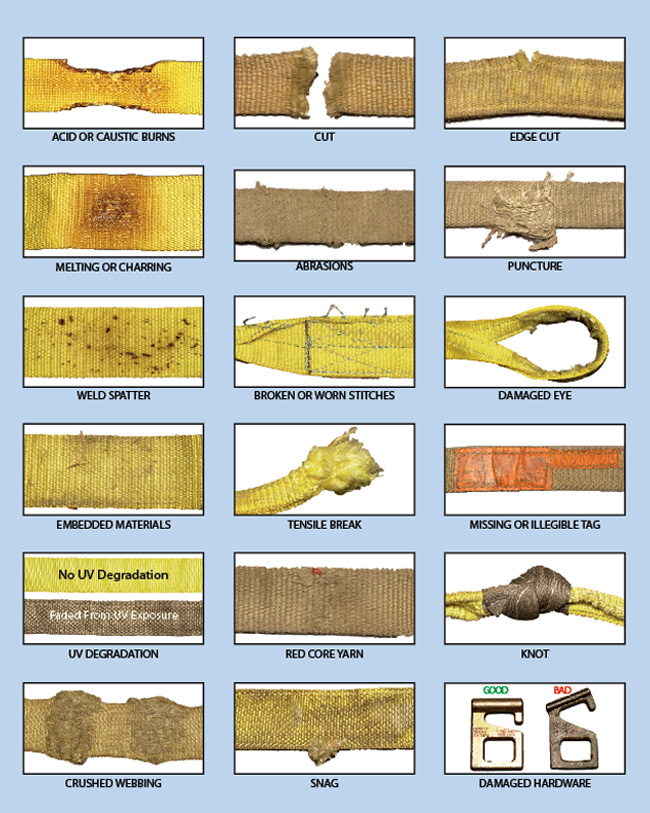
SLING INSPECTION MADE EASY
Factory trained professionals inspect all types of slings, hoists, below the hook lifting equipment and tie downs. Each item is thoroughly inspected per OSHA and/or ASME criteria, industry standards and/or manufacturer recommendation.
A detailed report identifying each item, the condition and approval or removal from service criteria will be provided. This report will also include recommendations to enhance sling service life and employee safety.
If you wish to repair or replace damaged slings, we will provide replacement costs. Generally if repair activity exceeds 50% of replacement cost, the repair activity is not recommended.
Items that pass visual inspection will be proof tested and certified.
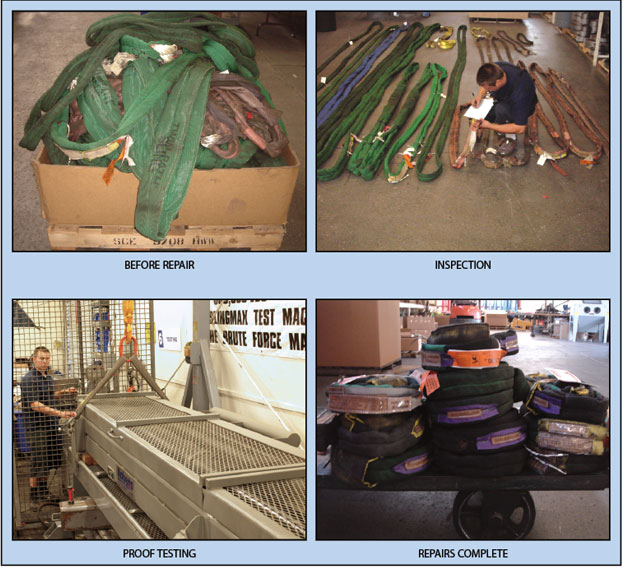
Repair • Testing • Certification
If repair work is necessary, it must be economically feasible and should only be done by a recognized sling manufacturer. Tent, awning, shoe and saddle shops are not equipped to test the repaired assembly and generally are not proficient in sling fabrication techniques.
Recycle your hardware, when the sling needs webbing replacement. Generally, the hardware components are reusable and utilization will substantially reduce overall sling costs. When we receive your components they are degreased and carefully inspected.
Repaired assemblies are proof tested to twice the assigned work load limit, per OSHA and ASME requirement. This procedure is done on equipment, which is annually certified to ASTM E4 standards and produces a machine generated record of each test. Beware of “testing” facilities that do not have the capabilities to offer a “machine” generated certificate of test.
An additional tag is attached to the assembly identifying Lift-It® as the repair agent. The test certificate is enclosed with the return shipment and your inspection records should be updated to reflect the repair activity, per OSHA requirements.
Lift-It® will provide certification of conformance for materials, strengths and work load limits for any of our products. A nominal charge will be applied if proof testing and certification are required.
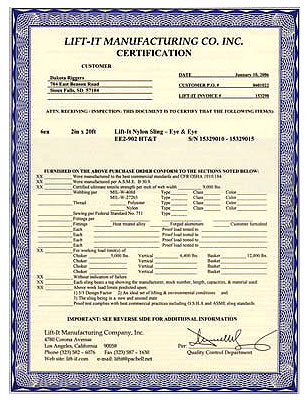 An additional tag is attached to the assembly identifying Lift-It® as the repair agent. The test certificate is enclosed with the return shipment and your inspection records should be updated to reflect the repair activity, per OSHA requirements.
An additional tag is attached to the assembly identifying Lift-It® as the repair agent. The test certificate is enclosed with the return shipment and your inspection records should be updated to reflect the repair activity, per OSHA requirements.
Lift-It® will provide certification of conformance for materials, strengths and work load limits for any of our products. A nominal charge will be applied if proof testing and certification are required.
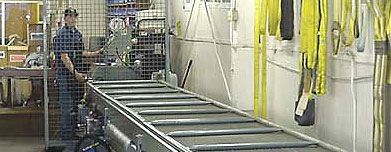
In order to prevent damage to slings, when not in use, we recommend that they be stored in a proper location.
Make sure the location is:
- COOL To prevent damage resulting from exposure to excessive temperatures.
- DRY To prevent the growth of mold and mildew, which can degrade synthetic fibers.
- DARK To prevent the deleterious effects of prolonged exposure to sources of ultraviolet light.
- FREE OF ENVIRONMENTAL/MECHANICAL DAMAGE Ventilated and not exposed to heat and chemical exposure, sunlight, weld spatter or grit and splinters from grinding or machining.
Slings should also be kept clean and free of dirt, grime and foreign material. Mild soap and water can be used for this purpose. Hard bristle brushes damage webbing, consider using a sponge. Soaking slings in mild soap and water for short periods of time is non-damaging. After cleaning, rinse slings thoroughly and allow them to completely dry before returning them to storage. A clean sling, free of dirt and grime is easier to inspect for damage. Consider replacing slings, instead of attempting to clean. The time, energy and resources necessary to be a sling launderer may exceed the purchase price of replacement slings.
Steam cleaning at temperatures in excess of 194ºF/90ºC can damage the sling. ![]() Steam cleaning at temperatures in excess of 194ºF/90ºC can damage the sling.
Steam cleaning at temperatures in excess of 194ºF/90ºC can damage the sling.
Power or pressure washing can force residue inside web and yarn fibers. The foreign material can cause internal yarn and fiber damage.
Web and roundslings are severely damaged by machine washing, resulting in a serious loss of sling strength!
